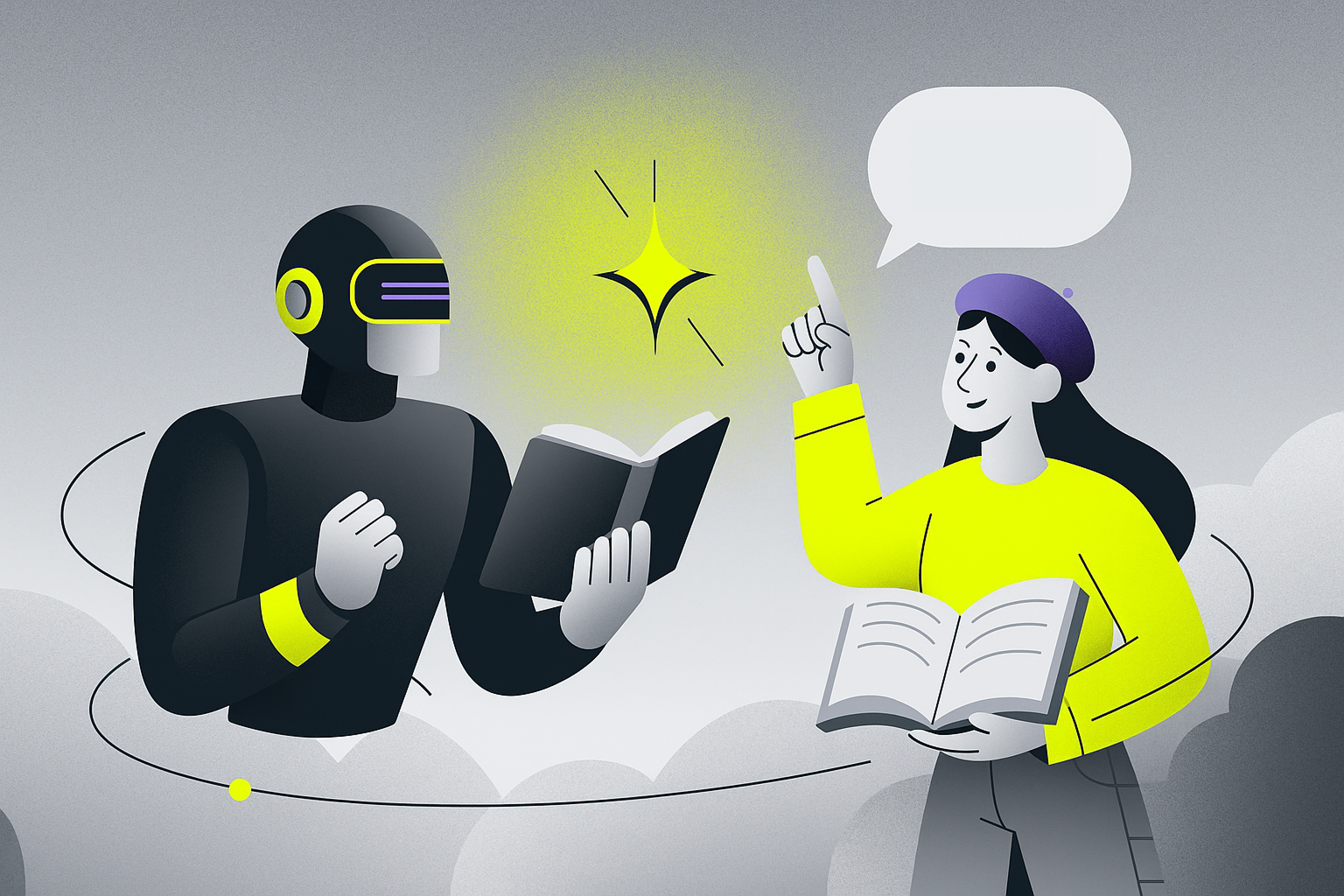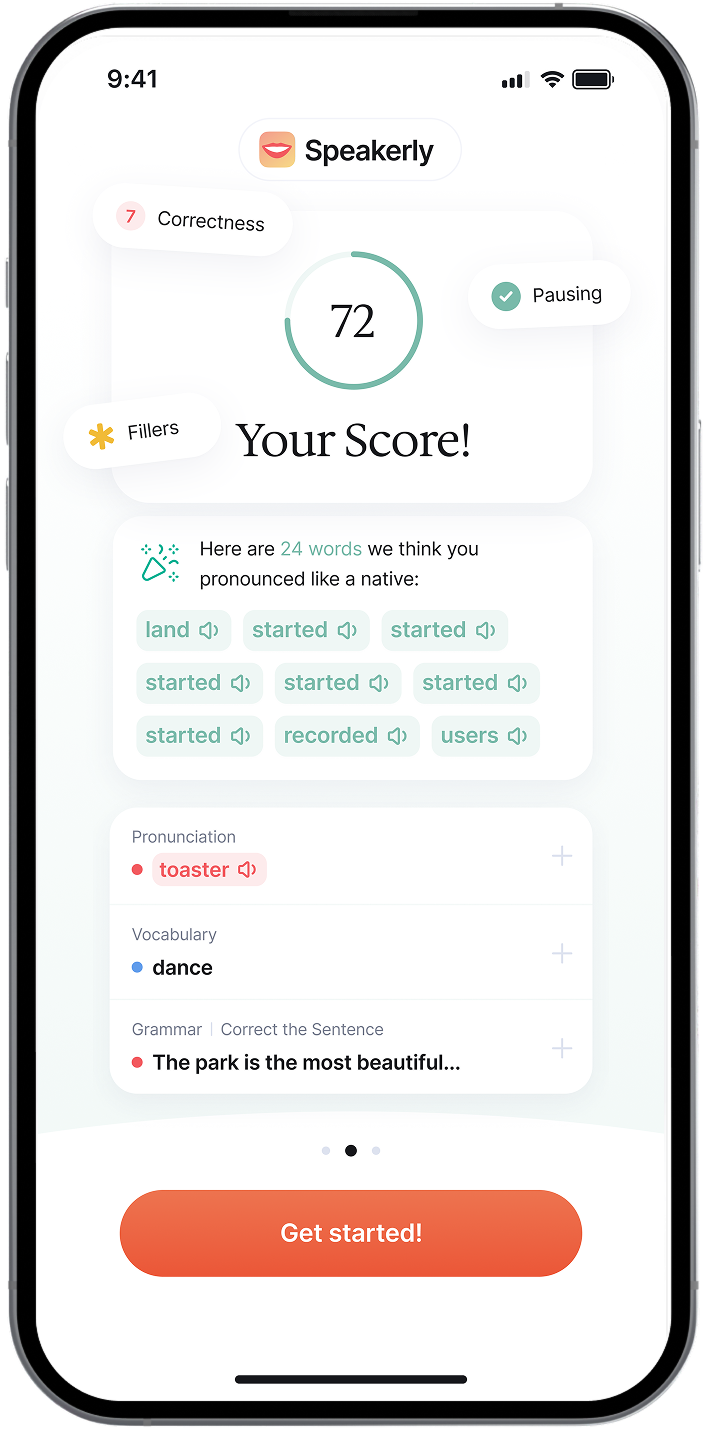High quality human teaching still delivers the richest socio-emotional support, nuanced feedback, and assessment you can trust. Well-designed AI tutors can boost practice time, give instant corrective feedback, and measurably improve specific skills like pronunciation and form-focused accuracy. The best outcomes arrive when you combine them: a human-led plan that uses AI for high-frequency drills, immediate feedback, and data-informed progress checks.
Below is a research-driven breakdown with clear recommendations.
What does “effective” mean in English learning?
Effectiveness should include:
- Learning gains in speaking, pronunciation, grammar, vocabulary, and listening
- Transfer to real conversations and assessments
- Motivation and engagement over weeks and months
- Equity and access, including cost and availability
- Validity and reliability of feedback and assessment
What the evidence says about human teachers
One-to-one tutoring is extraordinarily powerful. Bloom’s classic analysis showed average students tutored individually performed about two standard deviations above classroom peers, widely known as the “2-sigma” effect. The core ingredients were mastery learning, tailored pacing, and targeted feedback.
Corrective feedback works. Meta-analyses in second-language acquisition consistently find that timely corrective feedback improves learner outcomes, including pronunciation development. In English as a foreign language classrooms, studies show multiple feedback types are effective when delivered systematically.
Strengths unique to humans
- Rich discourse management and pragmatics coaching.
- Emotion and motivation support in anxiety-provoking speaking tasks.
- Classroom orchestration and valid assessment of spontaneous speaking.
- Cultural mediation and nuance that models real-world interaction.
Limits
- Limited time per learner, slower feedback loops, cost and availability constraints.
What the evidence says about AI tutors
Broad academic outcomes
- Randomized evidence is emerging. A 2025 randomized controlled trial found a custom AI tutor outperformed in-class active learning on knowledge gains and time efficiency, and raised engagement. This shows that when AI is carefully designed around proven pedagogy, it can deliver large benefits.
- Intelligent tutoring systems are generally positive in K-12. A 2025 systematic review reported overall positive effects of intelligent tutors, while noting variability and the need for longer, diverse trials.
- Caution with over-reliance. Some studies find that heavy dependence on generative AI can harm exam performance if students outsource thinking rather than practice skills. The emerging policy guidance stresses human oversight and assessment integrity.
English-specific outcomes
- Pronunciation and speaking clarity. A 2024 meta-analysis found automatic speech recognition based training produced a medium overall effect size for improving ESL/EFL pronunciation, with stronger effects when systems gave explicit corrective feedback rather than only indirect signals.
- Mobile and AI-assisted language learning. Syntheses of mobile-assisted learning show positive effects on L2 achievement relative to traditional approaches, and 2024 meta-analyses of AI interventions in language learning report significant gains, though heterogeneity remains.
Strengths unique to AI
- Instant, always-available feedback and unlimited practice.
- Fine-grained analytics that target high-frequency errors.
- Safe, low-anxiety practice for shy learners.
- Lower marginal cost at scale.
Limits
- Hallucinations and occasional inaccurate feedback if systems are not validated.
- Shallow discourse or pragmatic misfires in open conversation if not supervised.
- Equity challenges if devices or connectivity are limited.
- Assessment integrity and over-reliance concerns flagged by major bodies like UNESCO and the OECD.
Where each is strongest
| Goal |
Human teacher advantage |
AI tutor advantage |
| Rapid confidence building for live conversations |
Real-time socio-emotional support and scaffolding |
Low-stakes, 24/7 role-play to reduce anxiety |
| Accurate pronunciation and prosody |
Modeling of rhythm, intonation, pragmatic cues |
High-frequency, ASR-driven drills with explicit feedback that improve outcomes |
| Grammar and form-focused accuracy |
Targeted mini-lessons embedded in meaningful tasks |
Many short feedback cycles per session, spaced over time |
| Consistent practice |
Accountability and peer dynamics |
Unlimited reps and micro-practice streaks |
| Valid assessment |
Human judgement in authentic tasks |
Objective tracking of specific errors and fluency metrics |
Cost, access, and equity
Human one-to-one tutoring yields large effects but is expensive and scarce. AI offers a cost-effective way to approximate some benefits, particularly immediate feedback and personalization at scale. Policymakers and researchers stress guardrails so that benefits reach under-resourced learners without widening digital divides.
Practical guidance for learners and schools
If you are a learner practicing English:
- Use an AI tutor daily for 10 to 20 minutes of pronunciation, vocabulary, and targeted grammar drills. Prefer tools that give explicit corrections and show examples you can imitate. The ASR meta-analysis links explicit feedback with better gains.
- Add two human-led sessions per week for live conversation, role-play, and pragmatic feedback on tone and register.
- Track progress with both AI analytics and human assessments. If your AI shows reductions in specific error types, confirm with a teacher in live tasks.
If you are a teacher or program lead:
- Integrate AI for formative practice and error analytics, then use class time for discussion, projects, and feedback that AI cannot yet match. OECD and UNESCO guidance supports human-centred deployment.
- Set clear assessment policies. Permit AI for practice and drafting, restrict it for graded work, and emphasize oral assessments and supervised writing.
- Provide AI literacy for students and staff. Emerging frameworks focus on teacher competencies and responsible use.
Bottom line
For English practice, AI is highly effective for the “practice engine”: pronunciation drills, targeted grammar feedback, vocabulary review, and low-anxiety role-play. Meta-analyses and trials show meaningful gains when systems provide explicit, immediate feedback.
Human teachers are irreplaceable for the “transfer engine”: turning practice into real-world communication, managing motivation, and ensuring valid assessment. Decades of tutoring research and classroom feedback studies support this.
The most effective model is hybrid: let AI multiply high-quality practice and data, and let humans orchestrate goals, nuance, and meaning.
Frequently asked questions
Are AI tutors really effective for learning English?
Yes: studies show that AI-powered pronunciation and speaking apps can significantly improve accuracy and fluency when they provide explicit feedback. They’re ideal for daily practice, repetition, and confidence-building between real lessons.
Can AI completely replace a human English teacher?
Not yet. AI excels at instant corrections and unlimited practice, but human teachers remain essential for deeper communication skills, cultural nuance, motivation, and emotional support — things algorithms can’t fully replicate.
What’s the best way to combine AI and human teaching?
Use AI for daily micro-practice, pronunciation drills, and progress tracking; use human lessons for complex feedback, speaking fluency, and real-world conversation. Together, they create the most effective and affordable English-learning system.




